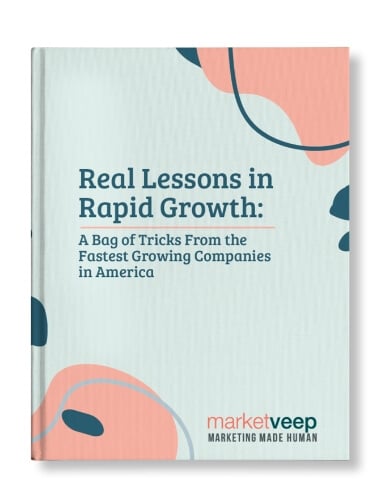Why Brand Identity is the Key To Your Success


By Market Veep
Creating a cohesive and consistent brand identity for your company will boost your success in a world of inconsistencies related to design. Stand out from your competitors by using design to its fullest potential.
Creating a great brand doesn't have to be complicated, but time and effort are needed to push the boundaries of your industry and stand out, not only from a product or service standpoint, but also from a visual perspective.
When it comes to brands, there are three different terms that tend to get tossed around as one and the same. The differences between a brand, brand identity, and branding can seem small, but understanding these differences will make a big impact in establishing your company.
Brand: How people and consumers perceive your business.
Brand Identity: Tangible elements that aim to be recognizable, differentiated, and accessible. All these items come together to form a brand image.
Branding: A process used to build awareness, attract new customers, and extend customer loyalty.



When your company has a strong brand identity, it will usually be the first thing that comes to mind when a customer is making a decision to make a purchase. With competition on the rise and endless options to choose from, it’s important to have a strong brand identity as it will give you an advantage when a customer is ready to make a purchase. Brand identity can also increase brand loyalty and trust with your customers.
Designing a brand identity seems like a daunting process, but breaking up each part into easily attainable sections will make it that much more efficient. Working with an experienced designer in each phase will make for a nearly seamless process.
Step 1: Understand what your brand stands for
If you don’t know what your own company stands for, how will potential customers know? This is where misinterpretation can come in and potentially impact your business negatively. Having a clear mission statement, knowing exactly what your company offers, and understanding who your competitors are will set the foundation for your identity.
Besides making a profit, why does your company exist? Digging deep to find that “why” will provide an emotional connection that people will be able to identify with. Embody your company’s message with everything your brand touches and help your employees understand the importance of it. When people agree with who your brand is on an emotional level, they’re likely to support and respect your company for more than just the product or service you offer.
“Design differentiates and embodies the intangibles — emotion, context, and essence — that matter most to consumers.” — Moira Cullen, VP Global Beverage Design, PepsiCo.
It doesn't hurt to establish design goals, constraints, timelines, and deliverables at this point in the process. Being on the same page with your designer will help eliminate large obstacles that can happen later down the road based on poor communication.
Step 2: Strategize
Before the designing begins, think of how you’d like your company to be visually represented. Jot down some adjectives that come to mind when you think of your company. Words like “bold, adaptable, efficient, modern, and trustworthy” can each be incorporated as a visual element in your identity.
Conducting market research can also help you identify how your brand can be visually defined. For example, do all your competitors use the same series of colors? This could be because of the industry (many brands labeled as “natural” or in the health field tend to use a lot of green) but using a different color palette can help your company really stand out in a sea of similarity.
Being different is essential, but don’t forget about your target audience and customer personas. Is your target audience baby boomers or millenials? Mostly male or female? Colors, typography, and imagery can all affect these specific audiences in a positive way or not, depending on how they are used and in what context with one another.
Step 3: Design, design, design
Once you have a clear identity for your company and have strategized who and what your brand should target, this is where the fun begins. The designer will be able to come up with visual ways to express these words and ideas into something tangible based on your agreed upon and set expectations or ideas from above.
“The best brands marry intelligence and insight with imagination and craft.” — Connie Birdsall, Lippincott
LOGO
Logos are meant to enhance the brand by making it memorable. When every other element is stripped away, can people identify your brand with just a brand mark and envision what your company, product, or identity entail?

People are exposed to a company’s logo the most, so it’s important to take the time and effort to create a thoughtful and powerful concept, then implement it in various ways.
Logo Do’s:
Make your logo thoughtful, insightful, explorative, and legible at various sizes (on mobile devices, computers, print, etc.). Flexibility and adaptability is important. Instead of displaying the entire logo everywhere, on some applications it might be necessary to go minimalist based on the real estate you have to work with (i.e. app icons).
Take Google's icon, for example:

It can take time, however, to establish brand recognition among people unless your company is already well-known.
Logo Don’ts:
Do not purchase a logo from stock image providers, use clipart, or use a logo generator. These are very generic and offer no insight for consumers. It’s easy to tell when a logo has been overused. Customers can usually tell the difference, even if it’s a subconscious notice. It may make your company appear inexperienced, unprofessional, and generic. Nobody wants that.
COLOR
When it comes to visual perception, the brain recognizes shape, color, then content last.
Color is the essence of emotion and the expression of personality. Colors and branding can be the key differentiators and identifiers of a product. Take the red of the Coca-cola logo or Tiffany Blue, for example. We don’t necessarily need to see the name or logo to know what brand or product is represented.
That’s the power of a strong brand identity using color as a prime factor.
Understanding color theory is essential when designing anything because it is connected with people’s emotions. Using the wrong color in your brand identity can create a confusing scenario to the consumer and they may stray away because there are conflicting messages across various elements that touch the brand.
Knowing your target audience from the step above will also influence how you choose color. Take into consideration the demographic of your audience. People from various cultures around the world view colors and their meanings differently. When at least 62% of the decision to buy a product is based on color, you want to make sure a professional is tasked with the job.
TYPOGRAPHY (Fonts)
Less is more when it comes to typography. Many brands can be recognized immediately based on their typographic style. Many children, before they can even read, know a brand based on the typeface used and style of the logo.
Scrolling through your software application and choosing a typeface based on looks isn’t the best way to choose. Graphic designers have the knowledge to pair different style typefaces together that create harmony and functionality, rather than choosing solely based on looks. Clarity and legibility are also key components on whether the type choices will be beneficial for it’s application.
Creating a Great Brand
Although slight changes are likely down the road in order to stay prevalent in ever changing industries, you’re on the right path to a successful brand if you’re staying consistent, not only with design but with who your company is as a brand.
Simply understanding the difference between a brand, brand identity, and branding, will help your company succeed in a world of visuals.
Get The Latest From
Market Veep
RELATED ARTICLES

Master Sales Funnel Strategies: Tofu Mofu Bofu!
Between SEO, SEM, and SERPS, we’re always finding clever ways to break down concepts into four...

Why B2B Demand Generation Strategies Work
The sparkly, PR rep cousin of lead generation, this approach is all about growing your audience by...

Key Marketing Strategies for Robotics Manufacturers
In fact, experts project that the U.S. Robotics market is on track to pull in $7.85 billion in 2024...

Get Growing!
Download our eBook and get advice from 8 CEOs of Inc. 5000 companies in their own words.

GREAT MARKETING PARTNER
Market Veep is a great firm that handles all of our marketing efforts. This is the second time that I have used the firm. I highly recommend Market Veep!

Cres F.

EXCEPTIONAL EXPERIENCE
Market Veep's Onboarding Experts in Inbound Marketing are an absolute game-changer! From the get-go, their approach was top-notch. Market Veep's team has undoubtedly set the bar high for excellence in inbound marketing. Five stars aren't enough to commend their outstanding service!

Matthew W.

BEST PARTNER EVER!
As a growing business, setting up our first-ever HubSpot account was a crucial step towards enhancing our marketing and customer management strategies. From the moment we contacted MarketVeep, their team demonstrated professionalism, expertise, and a genuine desire to help us succeed. Overall, our experience with MarketVeep was exceptional, and we couldn't be happier with the results. Thanks to their guidance, we are now utilizing HubSpot to its fullest potential, streamlining our marketing efforts, and nurturing leads more effectively.

Jean M.

SET UP FOR SUCCESS!
We had an exceptional experience with Market Veep! Their team is professional, super organized, and friendly, and I truly enjoyed working with them. They executed on time and made the process super easy with their organization and documentation. In addition, they provided additional guidance and answered my many questions as I was new to HubSpot, and provided documentation resources for future use. We're now set up to leverage all that HubSpot marketing has to offer, and we couldn't have done it without Market Veep's expertise.

Bailey G.

OUTSTANDING WORK
There aren't enough words to describe the outstanding, professional work MarketVeep has provided to our company. From start to finish, the website design/development team at MarketVeep assigned to our project was extremely knowledgable, respectful, efficient and timely. The results went above and beyond our expectations and we could not be more thrilled with the improvements to the user experience on our website! Bravo MarketVeep, we'll absolutely be back with more projects!

Nadine B.

5 STARS FOR MARKET VEEP!
We had a fantastic experience with Market Veep! Their expert team seamlessly guided us through implementing HubSpot and provided comprehensive training across Sales, Service, and Marketing Hubs. Their knowledge and support significantly enhanced our workflow and overall efficiency. Highly recommend Market Veep for top-notch HubSpot solutions!

Anneke C.







